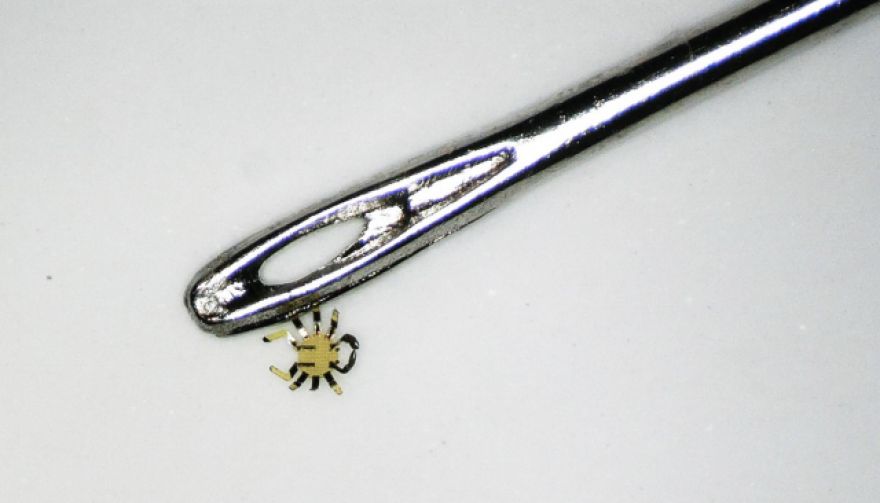
Northwestern University Builds Tiny Robot Crabs
The half-millimeter “crabs” constitute the world’s smallest remote-control robots. Smaller than a flea, they’re able to walk along the edge of a penny or thread a sewing needle. Despite (or perhaps because of) their size, the micro-robots are able to “bend, twist, crawl, walk, turn and even jump,” giving researchers hope that tiny robots may someday be able to perform tasks for humans in highly-constrained environments.
“You might imagine micro-robots as agents to repair or assemble small structures or machines in industry or as surgical assistants to clear clogged arteries, to stop internal bleeding or to eliminate cancerous tumors—all in minimally invasive procedures,” said bioelectronics engineer John A.
If you’re wondering how Rogers and Huang packed complicated hardware into such a tiny structure, you’d be right to ask—because they didn’t. The micro-robots are made up of a shape-memory alloy that, when heated, returns to a “default” shape. A scanned laser beam quickly heats the micro-robot at multiple points throughout its body, while a thin glass coating helps it to return to its deformed shape. This rapid back-and-forth allows the micro-robot to move from one location to another, covering a distance equal to half its body length per second. The robot crab also moves in whichever direction the laser is scanned toward; if the operator points the laser to the right, the micro-robot travels right.
This isn’t the first time Rogers and Huang have teamed up to engineer tiny tech. Less than a year ago, the duo unveiled the , a winged microchip about the size of an ant’s head. Before that, they worked with a team of biomedical researchers to create small that can be left in the body to disintegrate after their temporary purposes are fulfilled.
And because experimental engineering can in fact contain a bit of levity, the engineers chose to model their micro-robots off of crabs just because they were amused by the resulting movement. They also found themselves capable of producing micro-robots that looked and behaved like inchworms, beetles, and crickets, but it was the crabs they found funny and inspiring. “It was a creative whim,” Rogers said.
Now Read: